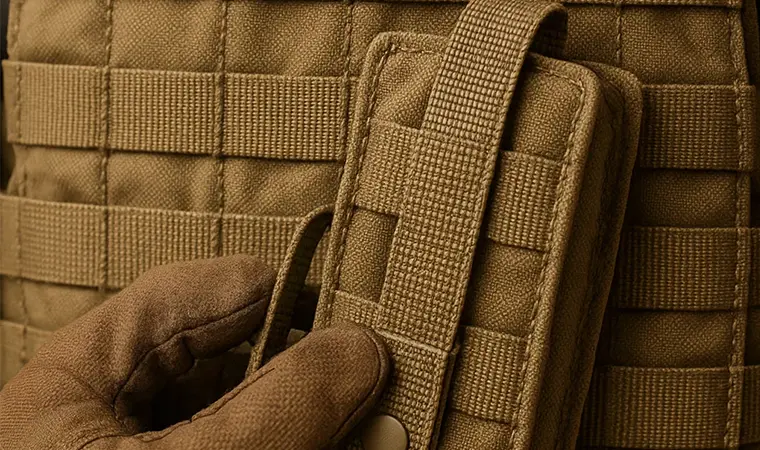Sourcing webbing for tactical vests or backpacks? While "MOLLE" and "PALS" are often used interchangeably, understanding the manufacturing specs is critical for production. As a premier manufacturer of Mil-Spec webbing, TMG Webbing produces the certified 1-inch nylon straps that form the backbone of these systems. We ensure your gear meets A-A-55301 and MIL-W-17337 standards.
This guide clarifies the difference between the system and the grid, and details the technical specs you need to specify in your purchase orders.
First, Let's Define PALS: The Grid Standard
PALS (Pouch Attachment Ladder System) is the "grid" itself. For manufacturers, this is the most critical part because it dictates the webbing width and spacing.
- Material: Must be 1-inch wide webbing (typically Mil-Spec Nylon).
- Vertical Spacing: Straps are spaced exactly 1 inch apart.
- Stitching: Bar-tacked at 1.5-inch intervals.
TMG Webbing supplies Solution-Dyed Nylon Webbing specifically designed for PALS grids, ensuring zero shrinkage and perfect dimensional stability so your sewing lines never drift.
So, What is MOLLE? The Gear System
MOLLE (Modular Lightweight Load-carrying Equipment) is the equipment that attaches to the PALS grid. If you are manufacturing MOLLE-compatible pouches, you need webbing straps on the back that are rigid enough to weave through the PALS grid.
Manufacturing Tip: For the back straps of MOLLE pouches, we recommend our stiffened nylon webbing. It's easier for users to weave and holds its shape better than standard soft tape.
Why Webbing Quality is Non-Negotiable
For a brand creating tactical and military gear, using verified materials is key to winning contracts. Here is what we offer:
1. Certified A-A-55301 & MIL-W-17337 Nylon
Cheap polyester webbing will fail under load. True PALS webbing must be high-tenacity nylon. Our factory produces webbing that meets:
- High Breaking Strength: Exceeding 1000lbs for critical load-bearing.
- Abrasion Resistance: Surpassing standard rub tests to prevent fraying.
- IRR Compliance: Essential for night operations. Read our guide to IRR webbing here.
🏭 Need 1-Inch Webbing for PALS Grids?
We stock Mil-Spec webbing in Coyote Brown, Ranger Green, Black, and MultiCam.
- Standard: A-A-55301 Type III
- MOQ: 3000 Yards (Custom Colors)
- Sample: Free Yardage Available
2. Laser-Cut vs. Webbing PALS
While laser-cut laminate is trending, traditional sewn webbing remains the gold standard for durability and repairability. We supply both Standard 1" Webbing and Composite Fabrics for laser cutting.
B2B Buyer's Checklist: What to Ask Us
When sending us an inquiry, specifying these details will help us quote accurately:
| Specification | Recommendation |
|---|---|
| Standard | A-A-55301 (Thicker) or MIL-W-17337 (Thinner) |
| Width | Strict 1 inch (25.4mm) tolerance |
| Treatment | IRR (Near Infrared) / DWR (Water Repellent) |
| Color | Pantone Code or Mil-Spec Swatch Match |
Partner with a Specialist Manufacturer
Don't compromise your tactical gear with generic strap materials. TMG Webbing is your partner for high-performance military webbing. Whether you need 5,000 yards for a small run or 500,000 yards for a government contract, we have the capacity.
Ready to start production? Contact our factory team today for your free sample kit and color card.

